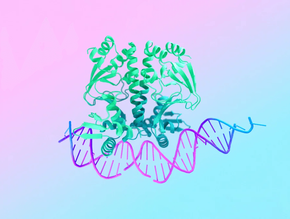2024: What comes next for AI and large language models?

The rapid advancements in AI and large language models (LLMs) have gained immense attention and excitement in recent years. While 2023 has witnessed significant breakthroughs in this field, the future of AI and LLMs holds even greater promise. Beyond the initial excitement, the year 2024 could mark a turning point, with the potential emergence of small language models (SLMs) as a game-changer.
While LLMs have demonstrated remarkable capabilities in generating human-quality text, translating languages, and writing a range of creative content, they still face certain limitations. One key area for example is addressing biases and ensuring fairness in their outputs. Additionally, enhancing their ability to reason and draw inferences from real-world data is crucial for their broader applicability.
Compared to LLMs which require massive amounts of data and computational resources, SLMs operate on a smaller scale, offering several advantages. Their reduced size makes them a lot more efficient and versatile, allowing for deployment on edge devices with limited processing power. As well as this, SLMs can be tailored to specific domains or tasks, leading to improved performance and reduced training time.
GenAI to create massive productivity leap
Hillary Ashton, Chief Product Officer at Teradata explains how 2023 was the year defined by the rise of ChatGPT, but next year, the focus on AI will shift from eagerness and excitement around LLM AI to what’s next. In her role, Ashton oversees a global team responsible for driving innovation, product management, engineering, and quality, ensuring that Teradata's hybrid multi-cloud platform delivers distinct value to both existing and prospective customers.
With a background in analytics, cloud technology, and cutting-edge innovations, Ashton plays a pivotal role in defining the strategic direction for Teradata's hybrid cloud platform portfolio. Her leadership has been instrumental in expanding market share and boosting revenue through the development of high-quality products and a world-class user experience.
“First, I foresee a massive productivity leap forward through GenAI, especially in technology and software,” she says. “It’s getting more cost-effective to get into GenAI, and there are lots more solutions available that can help improve GenAI solutions. It will be the year when conversations gravitate to GenAI, ethics, and what it means to be human. In some cases, we’ll start to see the workforce shift and be reshaped, with the technology helping to usher in a four-day work week for some full-time employees.”
The emergence of GenAI is set to trigger a significant transformation across a number of industries, particularly in the technology and software sectors. The integration of GenAI into the technology and software sectors will drive a wave of innovation, productivity gains, and ethical discussions, and while there will be challenges to address, the potential benefits of GenAI are huge, promising a future of enhanced efficiency, creativity, and human-AI collaboration.
“Talk around customer experiences will be dominated by AI’s impact, and we’ll see less focus on business intelligence,” explains Ashton. “We can also expect to see a resurgence around IoT discussions due to AI kicking this into a higher gear with near-sentient robots doing things better and faster. In businesses, cybersecurity will be the “best worst” job next year.”
The Future of AI and LLMs
The future of AI and LLMs is brimming with possibilities. As these technologies continue to evolve, they have the potential to revolutionise various aspects of our lives, from the way we work and learn to the way we interact with the world around us. The key lies in harnessing these powerful tools responsibly and ethically, ensuring that they serve to enhance human well-being and address global challenges
“I expect to see more and better uses of LLMs beyond our work lives,” says Ashton. “For instance, personal small language models will emerge that will help us with chores such as automating forms for schools and doctors and other time-consuming activities that AI can do faster and more easily.
“Sadly, GenAI will still be lagging in the “tell me a great joke” and other departments that require a real, functioning brain, so human creativity will remain at a premium. And one other thought … luddites will become their own market segment.”
******
Make sure you check out the latest edition of AI Magazine and also sign up to our global conference series - Tech & AI LIVE 2024
******
AI Magazine is a BizClik brand






